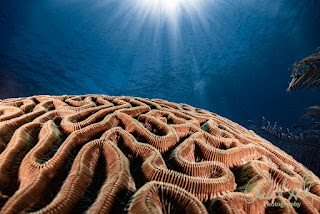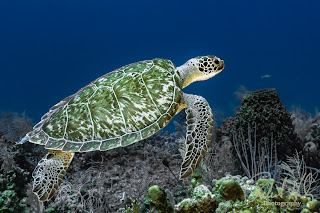Underwater Photography: Navigating the Depths of Camera Choices
One of the hardest decisions a Diver or Snorkeler has when considering diving into underwater photography is what kind of camera should I start out with and why. Below, I will try and assist you in this decision by at least giving you some basic information regarding the various types of cameras that are used by underwater hobbyists/enthusiasts.
Underwater photography offers a mesmerizing portal into the aquatic realm, a canvas rich with colors, textures, and life forms. Whether you're a casual snorkeler or a dedicated scuba diver, the quest for the perfect underwater camera can be both exciting and daunting. In this expanded guide, I'll navigate deeper into camera choices, their intricacies, and how they align with various underwater scenarios.
- Smartphones: The Everyday Aquatic Ally
Advantages:
- Portability: The ubiquitous nature of smartphones makes them an ever-present option. They slip easily into a pocket or pouch, always ready for that spontaneous underwater moment.
- Integrated Technology: Over the years, smartphone cameras have evolved dramatically. Many now boast features like advanced autofocus, optical image stabilization, and high-resolution sensors.
- User-Friendly: With familiar touch-screen interfaces, capturing and reviewing shots becomes second nature for most users.
Disadvantages:
- Depth Constraints: Smartphones, inherently, aren't designed for deep-sea adventures. Without specialized housing, their underwater utility remains confined to shallower realms, often under 10-20 feet.
- Battery & Durability Concerns: Extended underwater use can accelerate battery drainage. Moreover, while many modern smartphones claim water resistance, prolonged submersion or high-pressure scenarios can still pose risks.
- Cost Considerations: While the initial investment seems minimal, the true cost of smartphone underwater photography becomes evident when you factor in protective casings or housings. Quality waterproof cases can range from budget-friendly options to premium, specialized housings that rival the cost of dedicated underwater cameras.
- Action Cameras: The Dynamic Documentarian
Advantages:
- Compact & Robust: Action cameras, epitomized by brands like GoPro, are engineered for rugged terrains and challenging conditions. Their compact size and durability make them ideal for underwater adventures.
- Adaptable Shooting Modes: Action cameras come packed with diverse shooting modes, including time-lapse, burst, and high frame rate options, ideal for capturing the fluid beauty of marine life.
- Accessory Ecosystem: From mounts to filters to external lights, the accessory ecosystem for action cameras is vast. This versatility ensures adaptability to various underwater scenarios.
Disadvantages:
- Limitations of Field of View: The wide-angle perspective, characteristic of most action cameras, can sometimes distort subjects and limit versatility in composition.
- Limited Manual Controls: While newer iterations of action cameras offer enhanced manual controls, they traditionally emphasize automatic modes, which might not satisfy the desires of photography purists.
Cost Considerations: The pricing spectrum for action cameras is broad. Basic models offer affordability, but as you venture into higher-end models with enhanced features, the costs can parallel or even surpass those of compact underwater cameras.
- Compact Cameras: The Underwater Maestro
Advantages:
- Optimized Imaging: Compact underwater cameras are tailored for marine photography, boasting features like better zoom capabilities, improved low-light performance, and specialized underwater shooting modes.
- Depth Versatility: Designed with divers in mind, these cameras often have superior depth ratings, allowing for exploration beyond the limitations of smartphones or action cameras.
- Manual Mastery: For photographers who relish control over their craft, compact underwater cameras provide a plethora of manual settings, from aperture and shutter speed to white balance adjustments.
Disadvantages:
- Bulk & Handling: While not as cumbersome as DSLRs, compact underwater cameras are bulkier than smartphones or action cameras. This added girth necessitates considerations for storage, handling, and transport.
- Elevated Investment: The superior features and capabilities of compact underwater cameras come with a heftier price tag compared to their action camera counterparts.
Cost Considerations: The cost of a quality compact underwater camera can be significant, especially when considering additional accessories like external strobes, lenses, or specialized housings. This cumulative investment may rival that of entry-level DSLR setups.
Conclusion
Selecting the ideal entry-level underwater camera transcends mere technical specifications. It intertwines with personal preferences, intended usage scenarios, and budgetary considerations.
Smartphones provide an accessible way for spontaneous adventurers to try underwater photography, but they do have some limitations. Action cameras are great for dynamic storytellers as they are rugged and adaptable, but for those who are dedicated to the artistry of marine photography, compact underwater cameras are the best choice. These cameras offer excellent imaging capabilities, depth, and versatility.
In the vast expanse of underwater exploration, remember that every camera is a tool—a conduit to capture light, memories, and the beauty beneath the waves. Whichever path you choose, may it inspire awe, foster respect for our oceans, and immortalize the aquatic wonders for generations to come. Dive deep and capture the magic!
I am eagerly anticipating your valuable feedback and suggestions.
Sincerely,
Bob Herb




Comments
Post a Comment
Please let me know your comments.